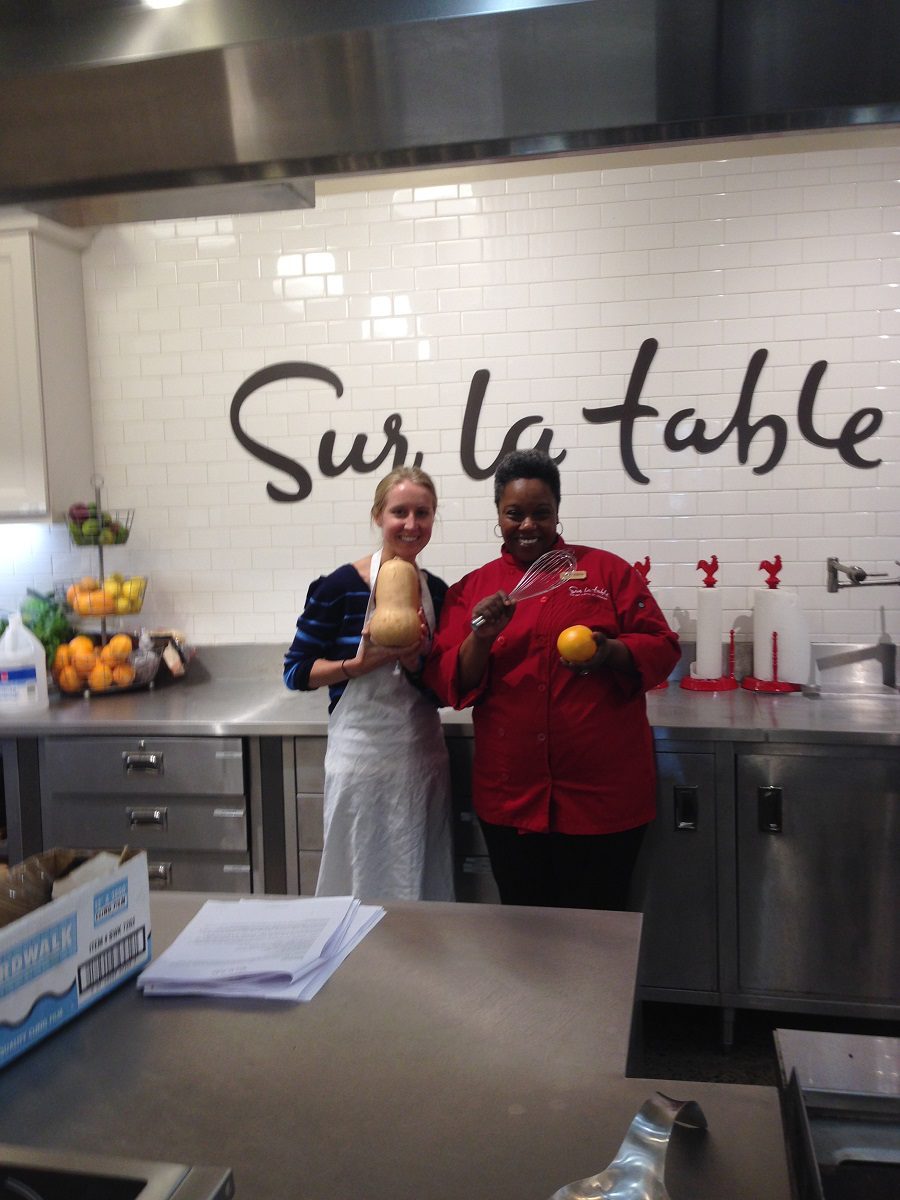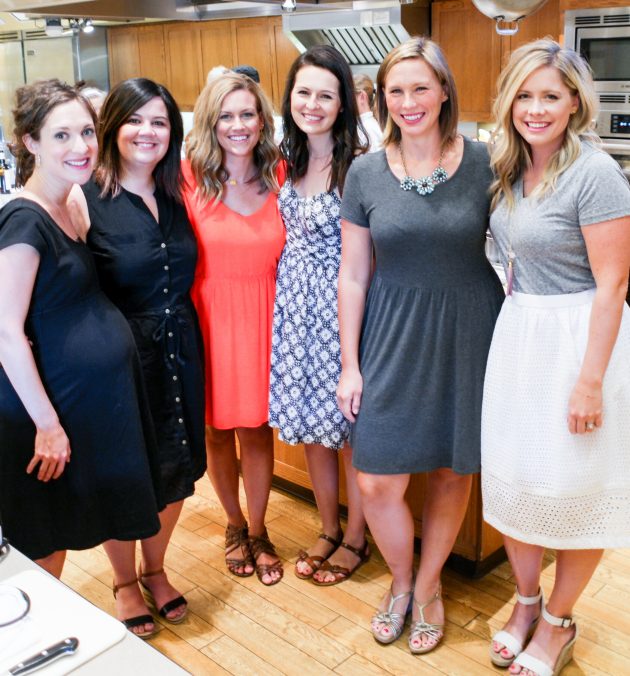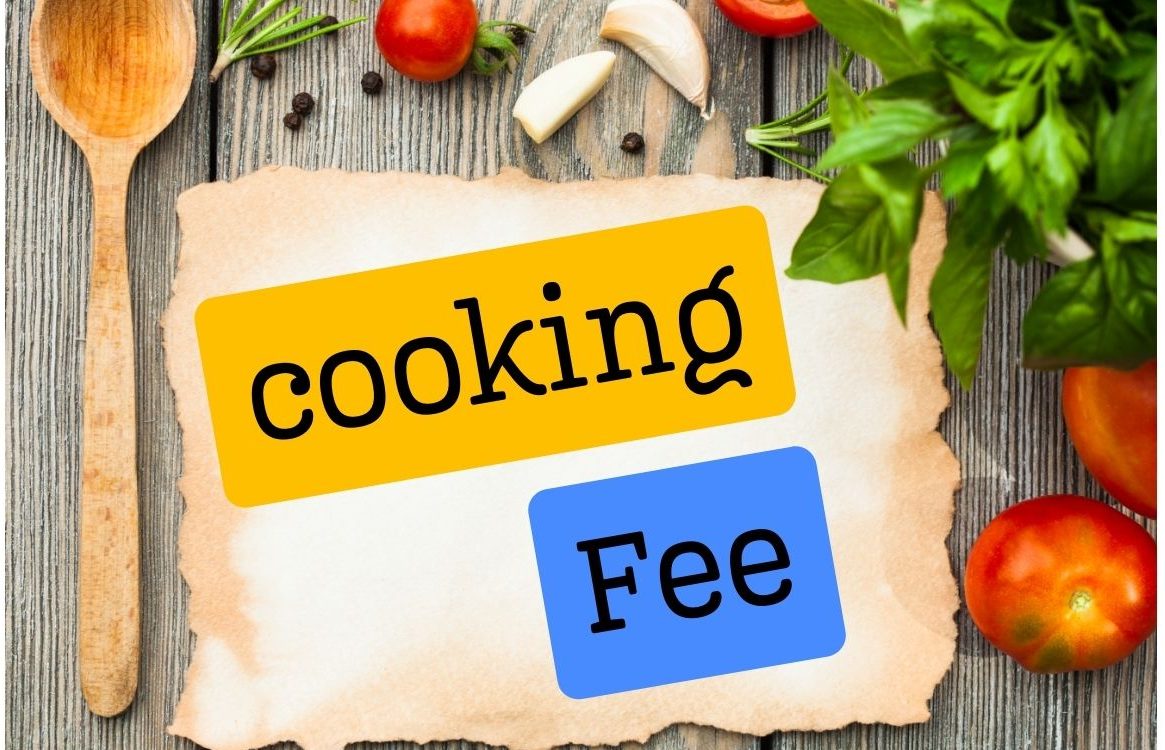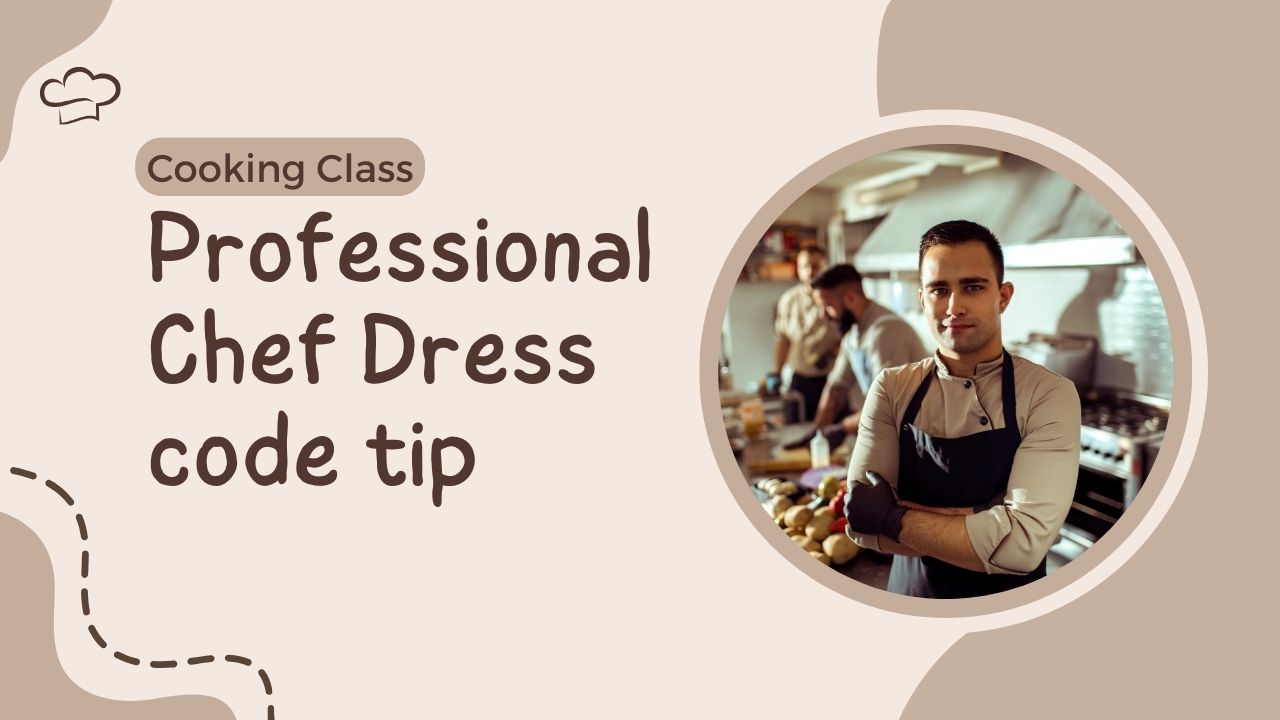wear to a cooking class, wear comfortable clothes like a T-shirt and jeans with closed-toe shoes. Avoid loose sleeves and dangling jewelry to stay safe and comfortable while cooking.
Attending a cooking class is a great way to improve your culinary skills and learn new recipes. To make the most of your experience, it’s essential to dress appropriately for the occasion. Choosing the right outfit can enhance your comfort and safety while allowing you to fully engage in the cooking process.
Additionally, wearing the right attire demonstrates respect for the class and its instructors. By following some simple guidelines, you can ensure that you are dressed appropriately for your cooking class, allowing you to focus on learning and enjoying the experience.
Choosing The Right Attire
When attending a cooking class, choosing the right attire is crucial. Not only does it play a role in comfort and practicality, but it can also impact your overall experience. Here are some guidelines to help you select the perfect outfit for your wear to a cooking class.
Comfort Over Style
It’s essential to prioritize comfort when selecting your wear to a cooking class attire. Since you’ll be spending a fair amount of time on your feet and moving around, opt for loose-fitting clothing that allows for easy mobility. Consider breathable fabrics like cotton or linen to ensure you stay cool in the heat of the kitchen.
Consider The Kitchen Environment
When choosing your outfit, take the kitchen environment into account. Avoid wearing long, flowing sleeves or loose jewelry that could potentially catch fire or interfere with food preparation. Additionally, closed-toe, non-slip shoes are a must to ensure safety and stability while working in the kitchen.
Appropriate Footwear
When attending a cooking class, wearing appropriate footwear is essential for both comfort and safety. Considering that you’ll be spending time on your feet, it’s important to choose shoes that provide adequate support and protection. Here’s a guide to selecting the right footwear for your wear to a cooking class experience.
Closed-toe Shoes
Opt for closed-toe shoes to safeguard your feet from spills, hot liquids, or dropped utensils. Closed-toe shoes provide an extra layer of protection, minimizing the risk of accidental burns or injuries.
Non-slip Soles
The kitchen environment can be prone to spills and slippery surfaces, making non-slip soles a vital feature in cooking class footwear. Choosing shoes with non-slip soles enhances traction and reduces the likelihood of slipping on wet or greasy floors.
Layering For Convenience
When it comes to attending wear to a cooking class, dressing appropriately is crucial for a comfortable and enjoyable experience. Layering your clothing is a smart choice, as it allows you to adjust your attire according to the temperature and the activities involved. In this article, we will explore the benefits of layering and provide useful tips on what to wear to a cooking class.
Wear A Comfortable Base Layer
A comfortable base layer is the key to a successful wear to a cooking class outfit. Opt for lightweight and breathable fabrics that allow your skin to breathe while you move around the kitchen. Consider wearing a fitted cotton or moisture-wicking t-shirt to keep you cool and dry throughout the class. This will serve as the first layer of your outfit, providing you with a comfortable foundation.
Bring An Apron
When it comes to cooking, spills and splatters are inevitable. To protect your clothing from stains and messes, it’s essential to bring an apron. Choose an apron that is made of durable and easy-to-clean materials, such as cotton or polyester. A good apron not only shields your clothes but also adds a touch of style to your overall look.
Consider Layering Options
Now that you have your base layer and apron ready, it’s time to think about additional layers. Depending on the environment and your personal preference, you can add layers such as a lightweight cardigan, a long-sleeved shirt, or a zip-up hoodie. These options allow you to adapt to changes in temperature during the class, ensuring your comfort throughout the cooking process.
Remember to choose layers that are easy to remove or adjust without disrupting the flow of the class. You don’t want to struggle with complicated buttons or zippers when you need to focus on chopping ingredients or stirring a pot.
Moreover, consider the materials of your additional layers. Opt for breathable fabrics that won’t make you feel overheated or sweaty. Natural fibers like cotton or linen are great choices, as they allow air to circulate and prevent excessive perspiration.
To summarize, layering for convenience is the key to dressing appropriately for the wear to a cooking class. Start with a comfortable base layer, bring an apron to protect your clothes, and consider layering options that allow you to adjust according to the temperature. By following these tips, you’ll be ready to roll up your sleeves, enjoy the cooking experience, and create delicious dishes without any discomfort.

Credit: www.bucketlisttummy.com
Avoiding Loose Clothing
When attending a cooking class, it is important to avoid wearing loose clothing that can get in the way while preparing and cooking food. Opt for fitted and comfortable attire to ensure a hassle-free experience in the kitchen.
When attending a cooking class, it is important to dress appropriately to ensure comfort and safety in the kitchen. One key aspect to consider is avoiding loose clothing, which can pose potential hazards such as getting caught in kitchen equipment or catching fire. This helps to prevent accidents and allows you to fully focus on honing your culinary skills. Here are a few tips to keep in mind when selecting your attire for a cooking class:
Avoid Long Sleeves And Loose-fitting Clothes
Long sleeves and loose-fitting clothes can easily get in your way while cooking. In a fast-paced kitchen environment, it’s best to opt for shorter sleeves or roll them up to avoid any interference. Likewise, loose-fitting clothes can be hazardous as they might accidentally catch fire or dip into food preparations. Choosing clothes that fit well and hug your body comfortably will enable you to move freely and avoid any unnecessary mishaps in the kitchen.
Tie Long Hair Back
Keeping your hair out of your face and away from food is crucial when it comes to maintaining hygiene and safety in a cooking class. If you have long hair, it’s recommended to tie it back securely using a scrunchie, hair tie, or hairpin. This ensures that stray strands won’t end up in your dish, reducing the risk of any contamination or accidents. Additionally, it allows you to concentrate on your cooking without the constant need to brush your hair out of your face.
Remove Any Jewelry
In a cooking class, it’s best to leave your jewelry at home. Rings, bracelets, and necklaces can get in the way and even pose a safety hazard. They can easily become entangled in utensils or machinery, causing injuries or damage. By removing your jewelry before the class, you can avoid any mishaps and fully focus on the culinary tasks at hand. Rest assured, your jewelry will be waiting for you safe and sound once you’ve completed your cooking adventure.
Additional Tips
When it comes to attending a cooking class, choosing the right outfit is key. Not only do you want to be comfortable and practical, but you also want to make sure you’re dressed appropriately for the occasion. In addition to considering the general guidelines for dressing for a cooking class, there are a few additional tips that can help ensure you’re dressed to impress. Whether you’re a seasoned home cook or a culinary newbie, these tips will help you put your stylish foot forward.
Check For Specific Dress Code Instructions
Before attending a cooking class, it’s always a good idea to check if there are any specific dress code instructions. Some cooking schools or culinary institutes may have guidelines in place to ensure the safety and hygiene of their students. These instructions may include wearing closed-toe shoes, tying back long hair, or avoiding loose clothing that could catch fire. By checking for specific instructions, you can make sure you come prepared and don’t violate any regulations.
Consider The Theme Of The Cooking Class
Another important factor to consider when deciding what to wear is the theme of the cooking class. Is it a casual cooking class at a local community center or an upscale class at a gourmet culinary school? The theme will give you a clue about the overall atmosphere and level of formality. For a casual class, you can opt for comfortable and relaxed attire, such as jeans and a t-shirt. On the other hand, for a more formal class, you may want to dress up a bit and wear something more elegant.
Choose Practical And Comfortable Clothing
In any cooking class, it’s important to wear practical and comfortable clothing that allows freedom of movement. Keep in mind that you’ll be standing for extended periods, moving around the kitchen, and possibly getting your hands dirty. Opt for clothing made from breathable fabrics that will keep you cool, such as cotton or linen. Avoid wearing overly tight or restrictive clothing that may limit your flexibility.
Additionally, consider wearing an apron to protect your clothes from spills and splatters. A good-quality apron will not only keep your outfit clean but also add a touch of professionalism to your look.
Pick Non-slip And Closed-toe Shoes
Your choice of footwear is crucial when attending a cooking class. Closed-toe shoes are a must to prevent any accidents or spills. Additionally, choose shoes that have a non-slip sole to ensure you have a firm grip on the floor. This will help prevent any slip-ups or falls, especially if the kitchen floor becomes wet or greasy. Opt for comfortable and supportive shoes that will keep your feet happy throughout the class.
By following these additional tips, you can ensure that you’re dressed appropriately and comfortably for your cooking class. Remember, the right outfit can enhance your overall experience and help you focus on creating delicious dishes!

Credit: www.chilliesandclothes.com

Credit: www.thesmallthingsblog.com
Frequently Asked Questions On What To Wear To A Cooking Class
What Should I Wear To A Cooking Class?
Wear comfortable clothes that you don’t mind getting messy. Opt for closed-toe shoes and avoid loose clothing that could catch fire or get tangled in equipment. Aprons are usually provided, but you can bring your own if you prefer. Layering is a good idea in case the kitchen gets warm.
Can I Wear Jewelry To A Cooking Class?
It is best to avoid wearing excessive jewelry to a cooking class. While small earrings or a simple necklace shouldn’t pose any issues, large or dangling jewelry can be a safety hazard and get in the way while you’re working.
Keep it minimal to ensure a comfortable and safe experience.
Should I Bring My Own Cooking Tools To A Class?
Most cooking classes provide all the necessary tools and equipment for participants. However, if you have a favorite knife or utensil that you’re comfortable using, you can bring it along. Just make sure to label your items to avoid any confusion or mix-ups during the class.
It’s always best to check with the instructor beforehand.
Is There A Dress Code For Cooking Classes?
While most cooking classes don’t have a strict dress code, it’s important to dress appropriately for a kitchen setting. Avoid wearing anything overly formal or restrictive. Opt for comfortable and practical attire that allows you to move freely and ensures your safety.
Remember, you’ll be cooking, so choose clothes that can handle spills and stains.
Conclusion
Choosing the right attire for a cooking class is crucial for both comfort and practicality. From breathable fabrics to functional shoes, considering these factors can enhance your overall culinary experience. Dressing appropriately allows you to immerse yourself in the class without any hindrances, enabling you to focus on learning and enjoying the art of cooking.
So, remember to dress smartly and comfortably to make the most out of your cooking adventure!

I am a cooking writer and blogger based in the USA. I have over 4 years of experience writing about the latest trends and innovations in cooking.
with a focus on topics like cooking recipes, how to cook, healthy cooking, and cooking classes.

